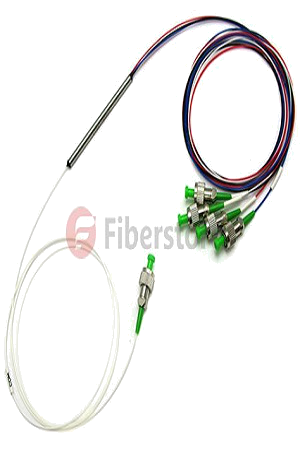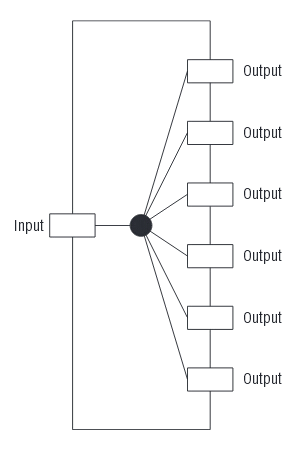Today we have access to more information than ever before. We live in a digital world and bandwidth is what makes a digital world happen. Aging copper networks are being taxed by residential and business customers. However, Passive Optical Network (PON) such as Fiber-To-The-Home (FTTH) are increasingly being deployed to meet the current and future bandwidth needs that the aging copper networks cannot support. Before introducing the PON, we should talk about the fundamentals of passive and active networks.
There are many types of networks carrying many different types of information. However, all these individual networks can be placed in one of two categories: Passive or Active. A passive network does not use electrically powered equipment or components to get the signal from one place to another. An active network uses electrically powered equipment or components to route the signal from one place to another. According the transmission media used in the networks, there are passive copper network, acticve copper network, passive optical network, and active optical network.
Passive Copper Network
There are many types of passive copper networks. However, the one virtually everyone is familiar with is their home Cable TV (CATV) network. In a copper CATV network, the cable provider supplies the signal to the home over a coaxial cable. In the most basic network, the cable enters the home and is routed to a single television. However, many homes have not only a single television. For homes with multiple TVs, the signal from the cable provider must be split for each television to receive the signal. The splitting is usually accomplished with an inexpensive device commonly referred to as a splitter . The splitter requires no electrical power. It will typically have a single input and may have two, three, four, or more outputs. An individual cable is routed from the splitter to each television.
One of the problems with this type of network is loss of signal strength. As the signal from the cable provider is split and routed to multiple televisions, the signal strength to each television is reduced. Adding too many televisions can reduce the signal strength to the point where none of the televisions receives adequate signal strength to operate properly. When this happens, it is time to look at installing an active CATV network.
Active Copper Network
Just as there are many types of passive copper networks, there are also many types of active copper networks. The previous section focused on a passive home CATV network and pointed out that you can only connect a limited number of televisions to this type of network. To have adequate signal strength for multiple televisions (for example, one in each room) an active network is required.
In one example of an active home CATV network, one cable enters the home and is routed to a distribution amplifier. The distribution amplifier boosts or amplifies and splits the signal from the cable provider. Each output of the distribution amplifier has a signal strength approximately equal to the signal strength on the input cable from the cable provider. An individual cable is routed from the distribution amplifier to each television.
This type of active network overcomes the signal strength problem associated with a passive network. However, it does add a level of complexity and requires power. If the distribution amplifier were to fail, all the televisions would lose their signals. The same would be true if the distribution amplifier were accidentally unplugged: every television in the house would be without a signal.
Passive Optical Network
There are many types of Passive Optical Networks (PONs). One of the most common types is very similar to the passive CATV network previously described. However, optical fiber is used instead of instead of coaxial cable. Many different passive devices are available to support different types of physical network topologies. Optical couplers are the core of any PON. An optical coupler may combine two or more optical signals into a single output, or the coupler may take a single optical input and distribute it to two or more separate outputs. Here is an example of a 1 × 6 coupler. This coupler is splitting a single input signal into six outputs.
 |
 |
Many optical couplers are designed for bidirectional (BiDi) operation, which enables the same coupler to be used either to combine signals or to split signals. In a BiDi coupler, therefore, each port can be either an input or an output. However, for a PON application, an optical coupler being used to split a signal may be referred to as an Optical Splitter.
In a PON, the input to the coupler would be split equally between the six outputs. Data going into the coupler would be sent to each output just as the signal from the CATV provider is sent to each TV in the passive copper network. Although each output will carry the same information as the input, the signal strength will be reduced based on the number of outputs. There is a finite limit on the number of outputs for a PON application; typically, the limit is 32. However, some applications may support more (up to 64 in Fiberstore).
Active Optical Network
An active optical network is very similar to the active home CATV network previously described. One optical fiber connects to a switch instead of a distribution amplifier. The switch rebroadcasts the data to each individual user. A separate cable is routed from the switch to each individual user. This type of active network overcomes the signal strength problem associated with a passive network. However, it does add a level of complexity and requires power. If the switch were to fail, all the users would lose access to incoming data. The same would be true if the switch lost power: data would stop flowing. Note: There are also Optical Amplifiers used in the active optical networks (DWDM, CATV, SDH etc.) to amplify the optical signals.